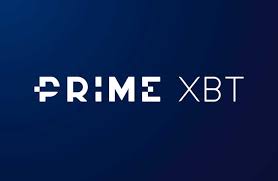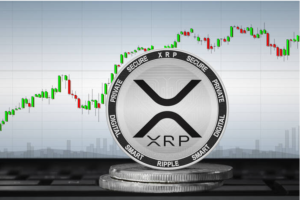First came the enthusiasm, now the REAL tests! JPMorgan begins blockchain trial with over 2,000 clients
If 2015 was the year in which most of the interbank electronic trading and FX giants suffered tremendous losses within their traditional core business activities, 2016 looks set to be the year in which the very same intebank dealers will leap forward in terms of technological innovation, especially with regard to the database based on the […]

If 2015 was the year in which most of the interbank electronic trading and FX giants suffered tremendous losses within their traditional core business activities, 2016 looks set to be the year in which the very same intebank dealers will leap forward in terms of technological innovation, especially with regard to the database based on the Bitcoin protocol that maintains a continuously growing list of data records that is known as Blockchain.
Blockchain is inexorably linked to Bitcoin, as the blocks that hold timestamped batches of recent valid transactions are used in the mining process. Each block includes the hash of the prior block, linking the blocks together.
The linked blocks form a chain, with each additional block reinforcing those before it, thus giving the database type its name. The original definition was written by Satoshi Nakamoto and found in the original source code of Bitcoin.
This, in effect means that as institutional interest grows in adapting Blockchain technology for use in mainstream banking activity, Bitcoin, by its very integral nature, must come along with it, marking a stark transformation from Bitcoin’s status two or three years ago as the darling of mavericks and anarchists looking to create a peer-to-peer method of circumventing the systems created by exactly the same banks (and central banks) that are now embracing Blockchain.
In January, FinanceFeeds reported that many major banks had invested several million dollars in the development and testing of Blockchain technology which could be used in order to automate certain procedures, from ledger to fund transfers, simplifying the technological method by which banking operations are carried out and eventually reducing costs.
Yesterday, JPMorgan Chase & Co. (NYSE:JPM) actually took the plunge and began to test the appliction of Blockchain technology for the purposes of moving money between London and Tokyo.
The current tests have been conducted across approximately 2,200 of JPMorgan’s clients as the latest evolution in the company’s testing of Blockchain technology in conjunction with Digital Asset Holdings, a New York based Blockchain technology startup which is operated by former JPMorgan executive Blythe Masters.
The amount of venture capital investment into Blockchain development startups over the last year has been vast, and Digital Asset Holdings is no exception, the firm having gained a $60 million round of funding from a group of investors which included IBM and Goldman Sachs.
The amount of investment into such startups has been record-breaking, with 21 Inc having secured an unprecedented $116 million funding round early last year.
In New York in the summer of 2015, Andrew Saks-McLeod met with several Bitcoin technology leaders, all of whom alluded to the future of Blockchain as an integral component within the technology used by mainstream financial institutions.
Daniel Gallancy, CEO and Founding Member of SolidX Partners, Jaron Lukasiewicz, CEO of Coinsetter and Todd McDonald, Partner at R3 all concurred that the future of Bitcoin lay within its Blockchain technology.
Mr. McDonald explained:
“We view the exciting part of Bitcoin as the discovery of the actual Blockchain itself, and the ideal situation is to wake the banks up to Bitcoin as a distributor in the financial world so that the blockchain can be opened up into aspects of the financial industry such as central clearing.”
Adding further to this, Mr. Lukasiewicz focused on exactly the methoodology by which Blockchain can be used for ledger and money transfer, exactly as is now being adopted by banks such as JPMorgan.
“It is essential to understand how the Blockchain technology is competitive, and who is using it. There is growth in the remittance use these days, so it is slowly displacing Western Union and MoneyGram at sometimes similar rates, and can be even done at much less cost, a tenth, but no consumers really try that. Companies are also trying to rival Transferwise which is taking Bitcoin into direct competition with deliverable FX” said Mr. Lukasiewicz.
Mr. Gallancy then explained:
“The settlement and record keeping uses of the Blockchain are important. The majority of technology in Bitcoin is not appreciated outside Bitcoin industry. We are seeing alot more interest in Blockchain than in Bitcoin, but heres the catch: For a traditional Blockchain, you cannot have one without the other. Bitcoin is the economic unit which enables miners to provide security to the blockchain. Without that, the security components cannot do their work.”
“For record keeping, and quasi-database functions, bearing in mind the amounts of Bitcoin involved, there are inherent scarce resources in the Blockchain and as we see more settlement and record keeping functionality, which would use resources, some of which include space on the blocks, this would push the price of Bitcoin up as there would be limited supply on the blocks, and increased use, despite Bitcoin’s presence only there because it cannot be separated from Blockchain.”
Clearly with the large institutions now putting this technology to live application, albeit a trial, the future of Blockchain appears to be set and these industry professionals were indeed correct in their predictions.
An interesting matter is that despite the downward direction that many of the traditional banking activities have taken over the past year which have dented the balance sheets of the major institutions to the tune of several billion dollars, investment in new methodology (which ironically began as peer-to-peer technology!) is important to them, which in itself is an indicator that this is a major priority for the future of banking operations.









